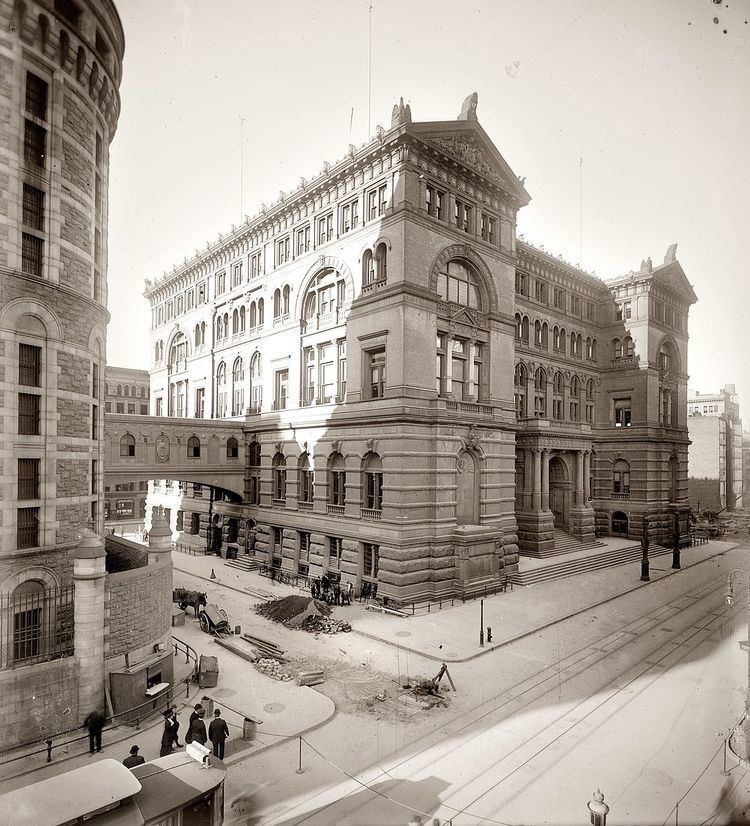 | ||
Thom & Wilson, the New York City-based architectural office of Arthur M. Thom and James W. Wilson, was a prolific partnership that turned out numerous brownstones in somewhat generic Romanesque Revival and Renaissance Revival styles.
The firm's most promiment commission was the 1894 Manhattan Criminal Courts (or "New Criminal Courts Building"), a grand, five-story Beaux-Arts structure with two sculpted pediments, situated on a full block between Centre, Franklin Street, Elm (now Lafayette), and White Streets in the Civic Center of Manhattan. Thom & Wilson won the commission in a competition; Napoleon LeBrun came in second. The courts building was connected with a so-called "Bridge of Sighs" to the 1902 City Prison building. Both buildings were demolished around 1939.
Other significant work by the firm includes their Harlem Courthouse, 170 East 121st Street (1891–93, standing) "one of the most impressive buildings in East Harlem" and The Nevada (1891, demolished) on the triangular plot bounded by Broadway, Amsterdam Avenue and 69th and 70th streets. The Nevada was built as an apartment hotel for J. T. Farley and leased out upon completion to a hotel operator. It was demolished for the present nondescript Nevada Towers, completed in 1977.
In many of their projects they were providing an architectural shell for highly standardized floorplans, for commercial enrepreneurs engaged in speculative building. They would ultimately design hundreds of developer-built brownstones in the Upper West Side. An unsigned article attributed to the contemporary critic Montgomery Schuyler considered the firm mere "architectural contractors." Yet their repertory of terra cotta details and ornaments on brown and tan brickfronts contribute to the special architectural and historic character of the Upper West Side-Central Park West Historic District.
Typical commissions
All the following are in New York City.
